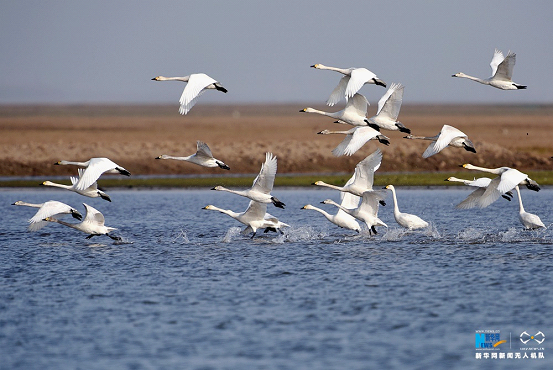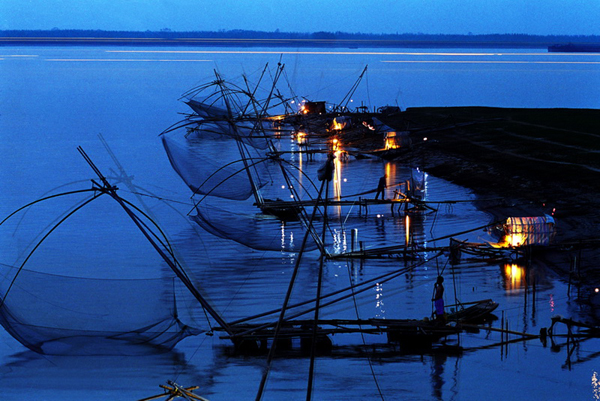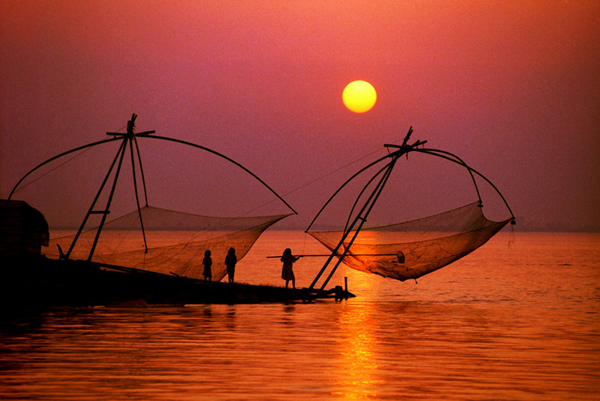Dongting Lake
As the famous Chinese fresh water lake, second only to the Poyang Lake in Jiangxi Province, the Dongting Lake spreads wide on an area of 1,300 square kilometers.
According to geologists, the lake area used to be part of an ancient anticline in south of the Yangtze River, but fell in a rupture during the movement of the Mount Yangshan 70 million years ago and became a lake.

Dongting Lake is composed of East Dongting, South Dongting and West Dongting. In ancient times, East Dongting Lake was a part of Yunmeng Pool. The East Dongting Lake Nature Reserve is one of China's 30 important wetlands in the Ramsar Convention on Wetlands.

The photo shows little swans at the East Dongting Lake National Nature Reserve. (Photo/Li Ga, Xinhua)
Every year, 217 species of migratory birds under state protection live through the winter here, such as white storks, white cranes, grey cranes and egrets. It will be a great fun if tourists take a boat tour in the lake, observe birds, listen to the waves, go fishing and taste delicious fish dishes in the nature reserve.

The Sanjiangkou Estuary (the confluence of Xiangjiang River, Yanjiang River, Jingjiang River) is another tourist attraction in Dongting Lake, where the lake meets the Yangtze River. As the lake's water is clear while the water from the river is turbid, the clear-cut currents were called by the ancients as "River Meeting"-a fantastic sight rarely seen elsewhere.
To expedite the transportation between Hunan and Hubei provinces, in recent years, the government has built Yueyang Bridge on the Dongting Lake-the longest highway bridge in China. Spanning over East Dongting Lake, the bridge is 10, 174.2 meters long, and is the first bridge with three main towers suspended with double-cable support in China. In addition to relieving traffic pressure, the bridge provides an express thoroughfare to facilitate emergent transportation of goods for floor control.
Transport: Bus Nos. 5 and 20
Tel :(86)730-8635328
Website: www.dongting.org
Chinese source: dongting.org
